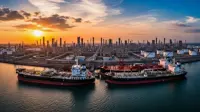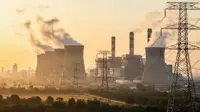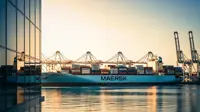UK scientists to deploy robots in Bay of Bengal to study effect of ocean conditions on rainfall patterns
14 Jun 2016
In an effort to better understand and predict South Asia's seasonal monsoon, UK scientists will release robots into the Bay of Bengal to study how ocean conditions might affect rainfall patterns.
The seasonal monsoon, which arrives between June and September, delivers over 70 per cent of India's annual rainfall and its arrival is eagerly awaited by hundreds of millions of subsistence farmers across the country. Delays could ruin crops or worsen drought.
The rains are, however, hard to predict and depend on a complex interplay of global atmospheric and oceanic movements that had not been yet fully understood. They could be affected by weather phenomena such as El Nino and, according to scientists, they could also become even more erratic with increasing climate change and even air pollution.
"We are aiming for a better understanding of the actual physical processes," said lead researcher Adrian Matthews of the University of East Anglia's School of Environmental Sciences, in a statement released Tuesday. "Ultimately, the goal is to improve the prediction of monsoon rainfall over India."
In the newly launched $11 million study, scientists from the university would spend a month at sea releasing seven underwater robots from an Indian research ship across a 400-kilometre (250-mile) stretch of water. The torpedo-shaped robots would glide through the water, monitoring its salinity, temperature and current before surfacing and transmitting data to a satellite.
Meanwhile, the progress of southwest monsoon was relatively slow as it was not getting a favourable system to move forward. But the prolonged hot spell across central and northwest India would be over soon as pre-monsoon showers would bring moisture in the air, the meteorological department said today.
The Southwest monsoon had now reached Karwar and Gadag in Karnataka and Ongole in Andhra Pradesh. However, its progress was relatively slow, India Meteorological Department (IMD) director general Laxman Singh Rathore said.
"The progress of monsoon is slow as it is still not getting a favourable system that can give it a boost to move forward," PTI quoted Rathore as saying, adding that this is a normal phenomenon.






















